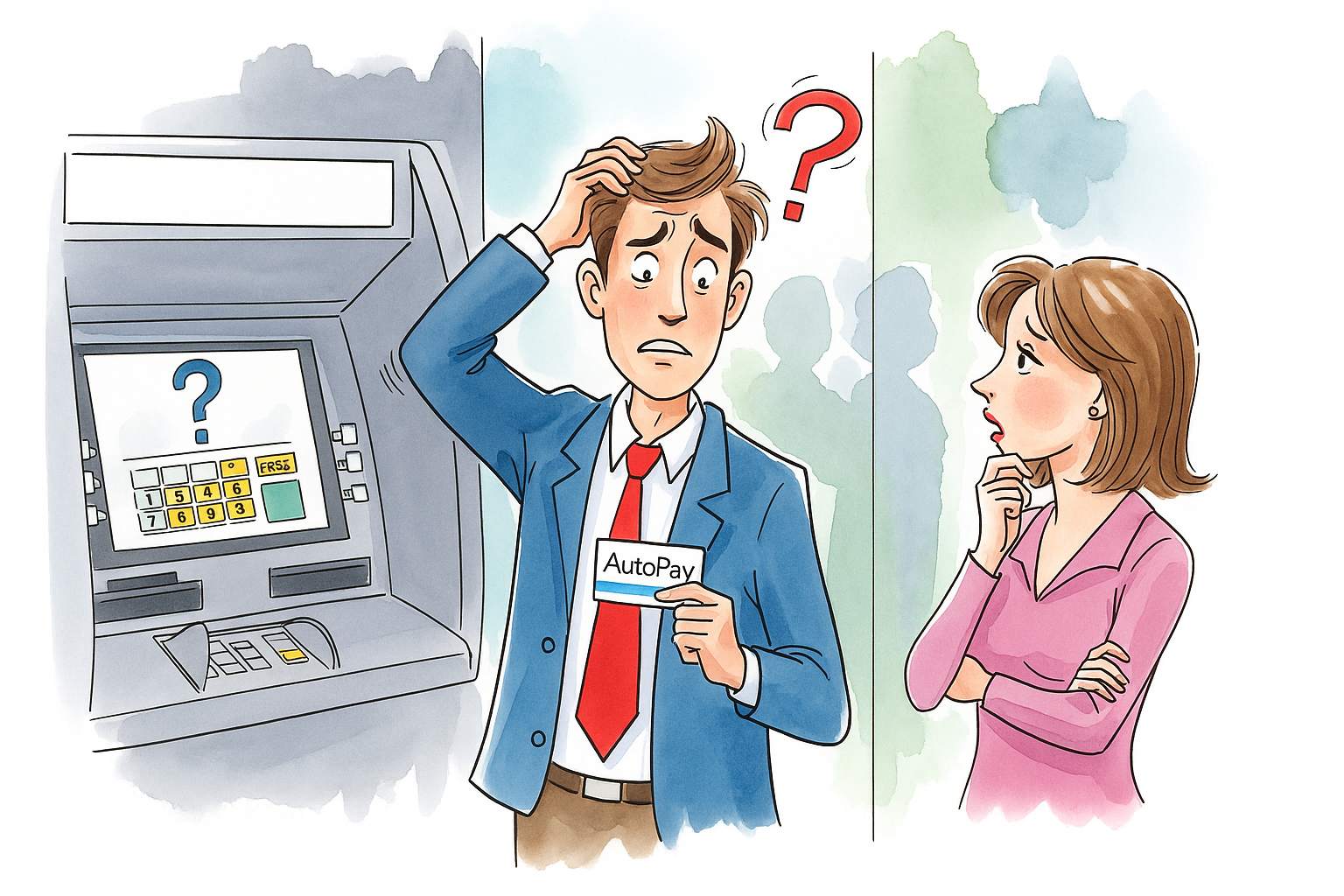What is AutoPay?
AutoPay is a convenient service that allows you to automate your bill payments. Instead of manually paying each bill every month, AutoPay ensures that your payments are made automatically on a scheduled basis. This service is particularly useful for recurring expenses such as utility bills, subscriptions, and loan repayments. By using AutoPay, you can save time and avoid the hassle of missing payments.
How AutoPay Works
When you set up AutoPay, you authorise a company or service provider to withdraw funds from your bank account or charge your credit card automatically. You typically need to provide your payment details and agree to the terms of service. Once set up, the payments will occur at regular intervals, such as weekly, monthly, or quarterly, depending on your agreement with the service provider.
The process is straightforward:
- Choose a Service: Decide which bills or services you want to automate.
- Provide Payment Information: Enter your bank account or card details.
- Set the Schedule: Choose how often payments should be made.
- Confirm: Review and confirm the setup.
Once everything is in place, you can relax knowing that your payments are handled automatically.
The Role of PIN in AutoPay
Do You Need a PIN for AutoPay?
In most cases, you do not need a Personal Identification Number (PIN) to use AutoPay. Instead, you will usually need to provide your bank account number or credit card details and possibly set up a password. The password serves as a security measure to protect your account and ensure only you can authorise payments.
However, some banks or service providers may require additional security measures, including a PIN, especially if you are making changes to your AutoPay settings or accessing your payment information online.
Situations Where a PIN Might Be Required
While a PIN is not typically needed for routine AutoPay transactions, there are specific situations where it may be required:
- Setting Up or Modifying AutoPay: When you first set up AutoPay or make changes to your existing setup, you may need to enter a PIN to verify your identity.
- Accessing Sensitive Information: If you want to view or change your payment details, some services may ask for a PIN to ensure that only you can access that information.
- Security Alerts: If there are unusual activities detected in your account, you might be prompted to enter a PIN to confirm your identity before proceeding.
Security Measures in AutoPay
How AutoPay Protects Your Information
AutoPay services are designed with security in mind. They use various technologies to protect your sensitive information. Here are some common security measures:
- Encryption: Your payment details are often encrypted, meaning they are converted into a code that is unreadable to anyone who does not have the right key.
- Secure Connections: AutoPay services use secure connections (HTTPS) to transmit your data, protecting it from being intercepted by outsiders.
- Regular Monitoring: Many service providers monitor transactions continuously to detect any signs of fraud or unusual activity.
These measures help to ensure that your financial information remains safe.
Importance of Strong Passwords and PINs
Using strong passwords is crucial when setting up AutoPay. A strong password should be:
- At least 12 characters long
- A mix of uppercase and lowercase letters, numbers, and special symbols
- Unique to each account to prevent cross-account breaches
If a PIN is required, make sure it is equally strong. Avoid easily guessed numbers, such as birthdays or simple sequences. A robust password or PIN adds an extra layer of protection to your AutoPay transactions.
Managing Your AutoPay Settings
How to Set Up AutoPay
Setting up AutoPay is generally a simple process. Here’s how you can do it:
- Log In: Access your account on the service provider’s website or app.
- Find AutoPay Options: Look for the AutoPay or recurring payments section.
- Enter Your Details: Provide your payment method and select the payment frequency.
- Review and Confirm: Check all information for accuracy, then confirm the setup.
Make sure to keep track of your payment dates and amounts to avoid any surprises.
How to Update or Cancel AutoPay
If you need to update or cancel your AutoPay settings, follow these steps:
- Log In: Access your account where you set up AutoPay.
- Navigate to AutoPay Settings: Find the section for managing AutoPay.
- Make Changes: You can either update your payment details or select the option to cancel AutoPay.
- Confirm Changes: Always review your changes and confirm them to ensure that they are processed.
It’s important to manage your AutoPay settings regularly to avoid any unwanted charges.
Conclusion
Key Takeaways on AutoPay and PIN Requirements
In summary, AutoPay is a practical solution for managing your regular payments automatically. While a PIN is generally not required for standard AutoPay transactions, it may be necessary in certain situations, such as setting up or modifying your account.
Always prioritise security by using strong passwords and staying informed about how your service provider protects your information. By managing your AutoPay settings carefully, you can enjoy the convenience of automated payments with peace of mind.



